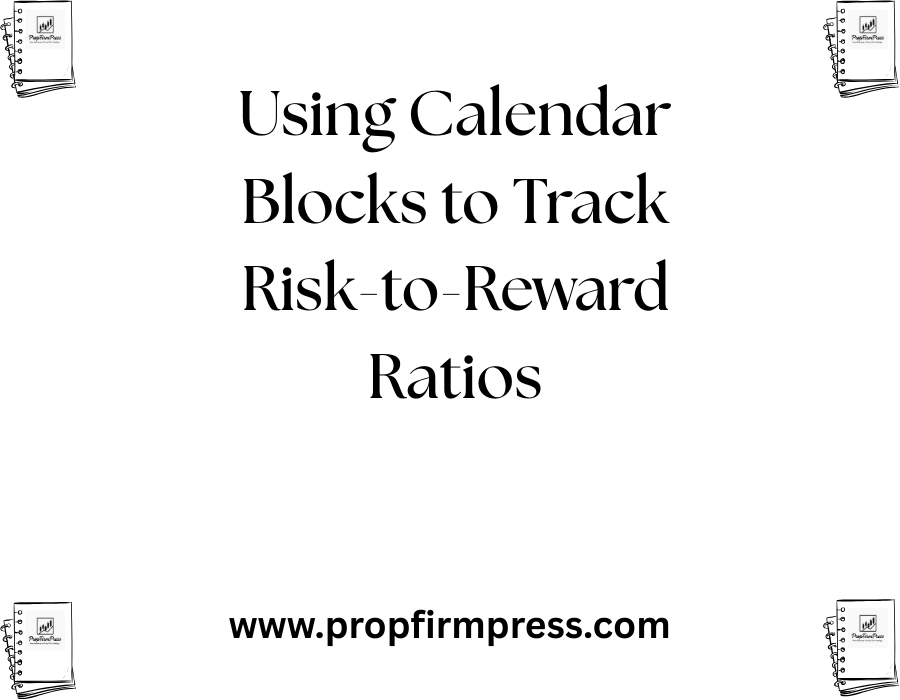Using Calendar Blocks to Track Risk-to-Reward Ratios
Effective management of trading performance requires detailed tracking and visualization tools that can provide clear insights into risk and reward dynamics. One powerful method to enhance this process is through the use of calendar blocks to monitor risk-to-reward ratios. Integrating calendar-based visualization into your trading routine not only simplifies data tracking but also promotes disciplined risk management and better decision-making.
The Importance of Risk-to-Reward Ratios in Trading
The risk-to-reward ratio is a fundamental concept in trading that compares the potential loss (risk) to the potential gain (reward) of a trade. Maintaining an optimal risk-to-reward ratio is essential for consistent profitability and helps traders identify favorable setups. Typically, traders aim for a minimum ratio of 1:2, meaning potential rewards should be at least twice the potential risk.
Despite its importance, tracking actual risk-to-reward ratios across multiple trades over time can be tedious without an organized system. Integrating this metric into a calendar allows traders to visualize and assess how well their trades align with their desired risk parameters throughout specific time frames.
Why Use Calendar Blocks for Visualization?
Calendar blocks serve as a natural way to segment and organize trading data by days, weeks, or months, making them ideal for visual tracking. This format supports intuitive recognition of patterns, trends, and anomalies that may be missed in raw numeric reports or spreadsheets.
Using calendar blocks allows traders to track not only when trades occur but also contextualize the risk-to-reward ratio within market conditions and trading strategies employed during that period. It facilitates a structured overview of performance, enabling better planning and adaptability.
Setting Up Calendar Blocks for Risk-to-Reward Tracking
Creating calendar blocks to track risk-to-reward ratios involves several key steps. First, decide on the time intervals—daily, weekly, or monthly—that best suit your trading frequency and review routine. Daily blocks are beneficial for active day traders, while longer periods like weeks or months may suit swing traders or investors.
Next, define a simple coding or color-coding system to represent different ranges of risk-to-reward ratios. For example, blocks could be colored green for trades with ratios above 1:2, yellow for between 1:1 and 1:2, and red for below 1:1. This visual framework quickly communicates performance quality on any given day.
Tools like digital calendars, spreadsheet applications, or specialized trading journals can be adapted to create these blocks and update them automatically or manually. Consistency in entering data and mapping trades to calendar dates is critical for accuracy and usefulness.
Incorporating Trade Details Within Calendar Blocks
While color codes provide immediate visual cues, adding detailed information to each calendar block enhances its value. Record key trade parameters such as symbols, entry and exit prices, stop loss and take profit levels, as well as the calculated risk-to-reward ratio.
This practice supports deeper analysis, allowing traders to revisit specific trades and understand the factors that influenced their success or failure. It also helps uncover systemic issues in certain strategies or market conditions that consistently yield suboptimal risk-to-reward outcomes.
Benefits of Tracking Risk-to-Reward Ratios Using Calendar Blocks
One major advantage is the ability to spot temporal trends. For instance, a trader may notice that trades executed early in the week have better ratios compared to those later in the week, perhaps reflecting market volatility or personal focus levels. Such insights can guide strategy adjustments and trade timing.
Calendar blocks also encourage discipline by providing a visible record of adherence to risk management rules over time. Seeing a series of green-coded days reinforces positive behavior, while blocks indicating poor risk-to-reward ratios highlight areas for improvement.
Furthermore, reviewing this information monthly or quarterly supports goal-setting and performance review. Traders can set targets for the proportion of high-quality risk-to-reward trades and measure progress directly within their calendar visualization.
Best Practices for Maximizing Calendar Block Effectiveness
Maintain consistency in data entry to ensure that your calendar accurately reflects trading activity. Automate where possible, using trading journals or software that can feed data into calendar systems to reduce errors and save time.
Regularly review your calendar blocks alongside other performance metrics such as win rate, average profit/loss, and drawdowns. This comprehensive approach enriches your understanding of trading performance beyond just risk-to-reward ratios.
Incorporate notes or reflections for each block to capture insights, market conditions, or emotional states influencing your trades. Over time, these annotations become a valuable resource for personal growth and strategy refinement.
Tools and Platforms Supporting Calendar-Based Risk-to-Reward Tracking
Several tools and platforms facilitate calendar-block tracking for traders. Spreadsheet programs like Microsoft Excel or Google Sheets can be customized with conditional formatting and formula-driven risk-to-reward ratio calculations linked to calendar dates.
Dedicated trading journals and performance trackers often include calendar views or calendar block features that integrate seamlessly with trade input. Some platforms even allow syncing with brokers to automatically pull trade data for timely updates.
Online calendar applications such as Google Calendar or Outlook can be adapted to include custom fields or tags representing trade parameters. Although less specialized, these remain useful for traders seeking a lightweight tracking system.
Enhancing Trading Performance Through Visual Risk Management
By harnessing calendar blocks for tracking risk-to-reward ratios, traders convert abstract metrics into tangible visual feedback. This method fosters greater accountability, sharper pattern recognition, and improved risk management over time.
Visualizing your risk-to-reward data on a calendar also aligns with behavioral trading psychology by reinforcing positive habits and enabling quicker recognition of deviations. The simplicity of this approach belies its power in driving smarter and more disciplined trading behavior.
Incorporating calendar-block tracking into your trading routine creates a dynamic, accessible, and informative framework that supports sustained growth and consistent execution aligned with your risk management goals.
